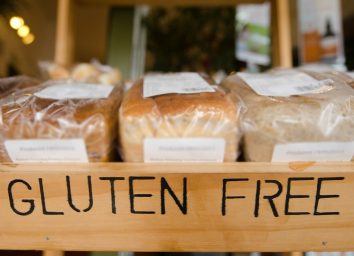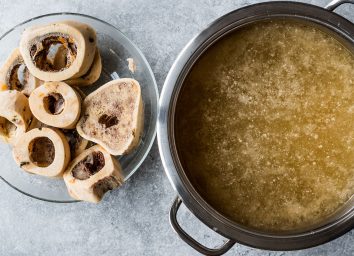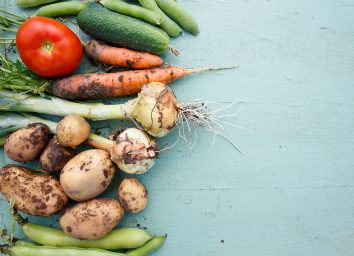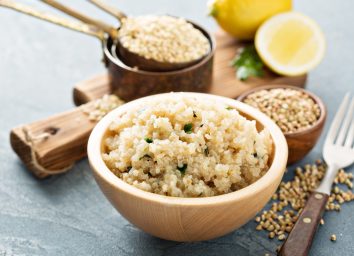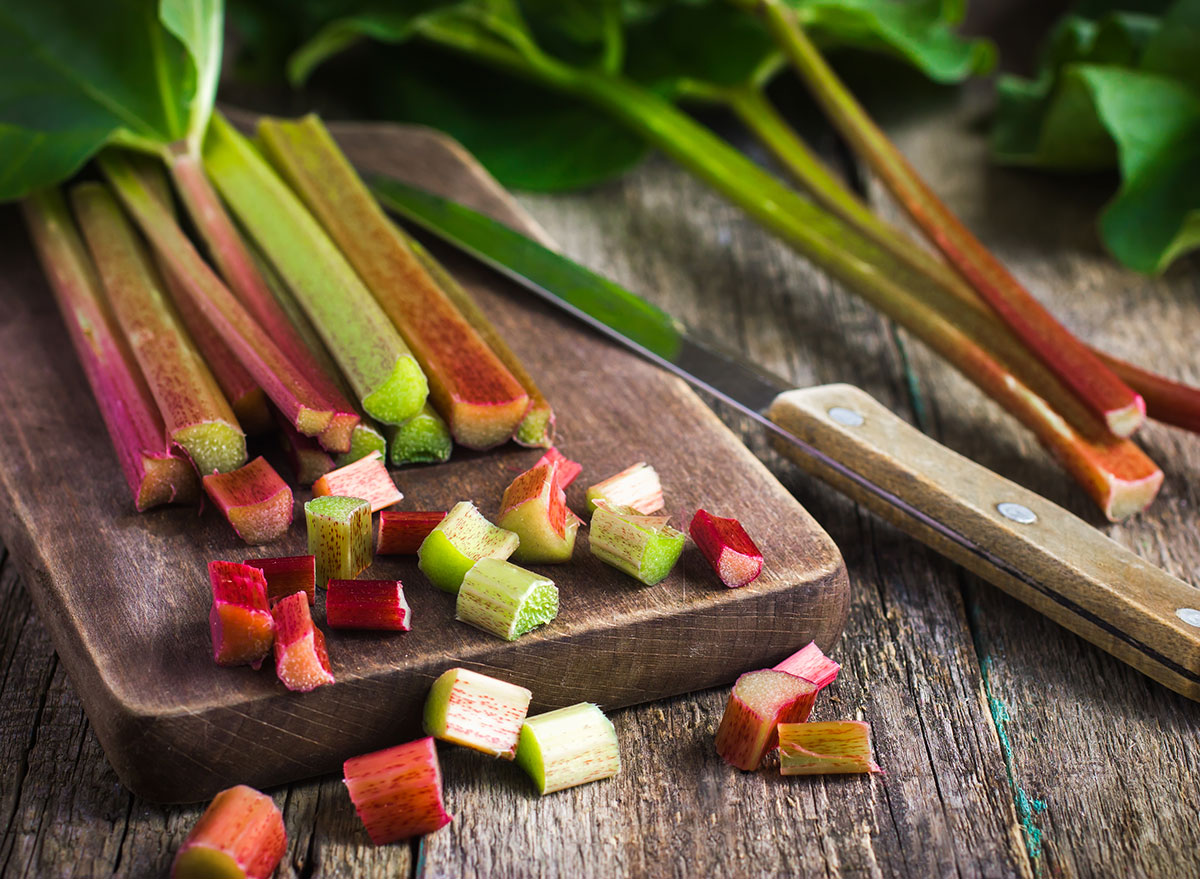
Rich in phytochemicals, phenols, and other nutrients, rhubarb is a vegetable best known for accompanying fruits in cobblers and pies. While the veggie is more versatile than you may think, it is good to have a little information before starting to cook with it, right? And there's a chance you might've noticed that rhubarb recipes use only the stalk—that's because the leaves are actually toxic. But this shouldn't stop you from enjoying the bright-red plant. Whether you eat it fresh or frozen, raw or cooked, rhubarb can add a tart flavor to any summer dish.
Let's get to know rhubarb a little better, shall we?
What is rhubarb?
First things first: rhubarb is a vegetable that functions like a fruit. It's very acidic, and it's typically associated with sweet dessert and bread recipes. The stalks grow straight into the air with broad, green leaves, ranging in color from lime green to deep red. The color doesn't indicate ripeness. Instead, it references which variety of the rhubarb it is. Rhubarb that's grown in a greenhouse has a brighter red hue and a sweeter flavor than traditional rhubarb that's grown outside.
When is rhubarb in season?
Rhubarb starts to grow in early spring and comes into peak freshness and flavor between the months of April and June. It can grow through the hotter summer temperatures, but the vegetable grows fastest and tastes the sweetest in the beginning of the season. Often found in farmers markets, the best stalks are firm, without evidence of wilting in their leaves.
What's the nutritional value of rhubarb? What about the health benefits?
Just one cup of diced rhubarb has only 26 calories, while one stalk comes in at 11 calories and overall is very low in fat and sugar. There isn't a significant difference between fresh and frozen rhubarb either, so both are solid options. Antioxidants include anthocyanin and lycopene, which help keep your heart healthy and prevent cancer.
Safa Nooromid, R.D., L.D., who works with patients managing kidney disease, diabetes, and weight issues and also operates her own private practice in Atlanta, Georgia, recommends rhubarb for those who don't have kidney issues. "It can be eaten raw, but because of the tart flavor, it's more often cooked or treated with sugar. Rhubarb has fiber, calcium, vitamin C and vitamin K, which is very important for strong bones and iron. It has a lot of nutrients."
What does rhubarb taste like?
Rhubarb is very tart. Depending on the preparation, it can be a tangy addition to a recipe or a sour surprise. The key with rhubarb is to prepare the right amount in the dish so that its tartness doesn't overwhelm, but instead adds another layer of flavor.
Is rhubarb poisonous?
The large green leaves of the rhubarb plant have a compound called oxalate or oxalic acid. In large quantities, this is toxic, causing distress and even kidney stones. Nooromid places particular importance on avoiding rhubarb leaves if you have prior kidney issues. "It's more poisonous for those with kidney damage because they can't excrete it. It's something that dialysis patients should be very cautious about," she says.
How do you cook rhubarb? Can you freeze it?
It's important to use a non-reactive pan, such as aluminum, stainless steel, or a ceramic-coated cast-iron one, when cooking the veggie, as the highly acidic nature of the vegetable causes other types of pans to leak chemicals into the food. When cutting the rhubarb, use only the stalks to eliminate exposure to the oxalic acid in the leaves. It's recommended to cut the leaves off of the vegetable as soon as it comes home from the market. Fresh rhubarb can be stored in the refrigerator for around three weeks.
For a simple sauce, the stalks can be cut into pieces before adding ¾ cup of water to every four cups of cut rhubarb in a pot. The contents are brought to a boil and then simmered until the vegetable breaks down and becomes soft. Adding a little sugar balances the tartness, too. The sauce is tasty over ice cream, waffles, or even drizzled over fresh fruit.
Rhubarb is easily frozen for later use by removing and disposing of the leaves, cutting the stalk into pieces, and placing them on a cookie sheet in the freezer until solid. Then, they can be put into an airtight bag or container and used in the quantity desired. The frozen vegetable can be used for up to a year.
How do you grow rhubarb?
This perennial plant—if cared for properly—can produce seasonal rhubarb stalks up to eight years. They grow into large plants, so having ample room between them is important to allow them to thrive. They require fertilizer and water through the growing season to keep them producing, and when the summer heat comes, a layer of mulch around the base will help protect vulnerable new growth. Rhubarb won't produce until after it's been established for a year, so expect to get your first crop after your first season growing.
When it comes to harvesting the veggie, it's all about the stems. The stems—which should be around a foot long or a bit longer—can be cut with a knife near the base to harvest. Carefully pulling and twisting can also remove a stalk, but it may be preferable to cut the plant to avoid root trauma. After it's established, a rhubarb plant can produce up to six pounds of stalks.
What are some creative ways to use rhubarb?
One unexpected concoction infuses rhubarb and ginger into liqueur to make pink gin. Zach Schultz, chef, and owner of Cotton & Rye, an award-winning restaurant in Savannah, Georgia, has used rhubarb in savory and sweet dishes.
"We've made a rhubarb jam and used it on the sausage and cheese board. We have also done a strawberry-rhubarb cobbler with a brown sugar streusel and vanilla bean ice cream, which is ridiculously good," he says.
Rhubarb can be added to tomato sauces and soups to add depth to the flavor. It is excellent stewed in barbecue sauce, in homemade ketchup, or in tomato basil soup. It looks like it's about time to start adding rhubarb to your plate more often!
